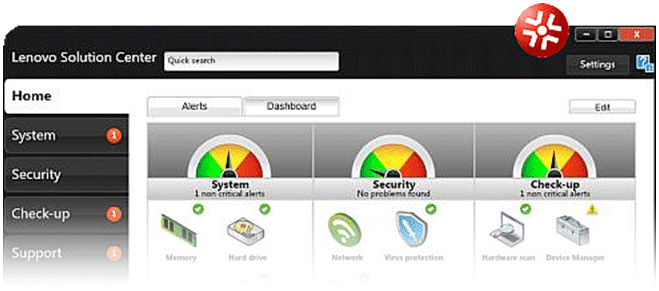Lenovo fixed two flaws (CVE-2016-5249, CVE-2016-5248) in the Lenovo Solution Center, once again the company faces problems with pre-installed bloatware.
Lenovo has fixed two high severity vulnerabilities, CVE-2016-5249, and CVE-2016-5248, in its Lenovo Solution Center that could be exploited by hackers to gain access to vulnerable machines and to kill any process running on them. The CVE-2016-5249 is an arbitrary code execution by unprivileged local users, meanwhile the CVE-2016-5248 is an arbitrary process termination by unprivileged local users.
“Local privilege escalation vulnerabilities were identified in Lenovo Solution Center where unprivileged local users could terminate processes running at higher privilege levels (CVE-2016-5248) or execute arbitrary code (CVE-2016-5249) with LocalSystem account privileges.” states the security advisory published by Lenovo.
In the attack scenario, the hacker with existing hacked access can escalate its privilege to run tasks with local system rights.
The OEM software is pre-installed on Lenovo machine and was designed to allow users in managing updates for Lenovo tools and several features including the firewall.
“The software allows users to quickly identify the status for system health, network connections and overall system security.”
The two vulnerabilities were discovered by the Trustwave researcher Martin Rakhmanov, who reported them to Lenovo. Below the descriptions provided by Rakhmanov.
“CVE-2016-5249 Any local user can execute arbitrary code on machine as LocalSystem where Lenovo Solution Center 3.3.002 or earlier is installed via set of commands:
Any local user can execute arbitrary code on machine as LocalSystem where Lenovo Solution Center 3.3.002 or earlier is installed via set of commands: 1. Create a named pipe and a mutex with some helper application. 2. Issue “sc start LSC.Services.SystemService StartProxy PipeName MutexName PID” command containing information from previous step. 3. Observe TCP port that comes to the named pipe from Lenovo service. 4. Using any raw socket client connect to localhost on port retrieved in previous step and send BASE64-encoded commands to the service. Among others there is a command allowing to load arbitrary .NET assembly into a process running as LocalSystem. This allows to execute any code as LocalSystem.”
meanwhile, the second issue is described as
“CVE-2016-5248 Any local user can kill arbitrary processes on machine where Lenovo Solution Center 3.3.002 or earlier is installed via command: sc start LSC.Services.SystemService StopProxy <PID> For example: sc start LSC.Services.SystemService StopProxy 876 Will kill process with ID 876 even if it is running as another (privileged) user. This could be used in mounting further attacks by disabling AV or some other protection mechanisms for instance.
“This could be used in mounting further attacks by disabling anti-virus or some other protection mechanisms for instance,” Rakhmanov says.
“Specifically, we at Trustwave SpiderLabs’ found that the new version, even though significantly reworked, still allowed unprivileged users to elevate privileges to LocalSystem.”
Users urge to upgrade the Lenovo Solution Center to version 3.3.003.
“Lenovo has released an updated version of Lenovo Solution Center that addresses these vulnerabilities. Lenovo is providing this update through several channels to ensure that as many users as possible get the update as described below: “
1) Updating via Lenovo Solution Center:
Users should open Lenovo Solution Center and they will be presented with a prompt to automatically update LSC to the latest version. Depending on the version of Lenovo Solution Center installed, select either “Yes” or “Update Now” when presented with the prompt.
2) Updating via the Lenovo System Update utility
Open Lenovo System Update and click Next to Get new updates. Follow the prompts to update your system with the latest version of Lenovo Solution Center.
3) Updating via direct download
Click on the download link from the following website. Follow the instructions in the readme file to install the update manually:https://support.lenovo.com/lenovodiagnosticsolutions/downloads
This isn’t the first time that the pre-installed Lenovo software is found vulnerable by the experts. In May, the company fixed a security vulnerability in the Lenovo Solution Centre (LSC) support tool that could have been exploited by attackers to execute code with system privileges and take over the machine.
The good news is that this time, Lenovo has fixed the issue in five weeks, less time than that used in May.
Source:https://securityaffairs.co/

Working as a cyber security solutions architect, Alisa focuses on application and network security. Before joining us she held a cyber security researcher positions within a variety of cyber security start-ups. She also experience in different industry domains like finance, healthcare and consumer products.












